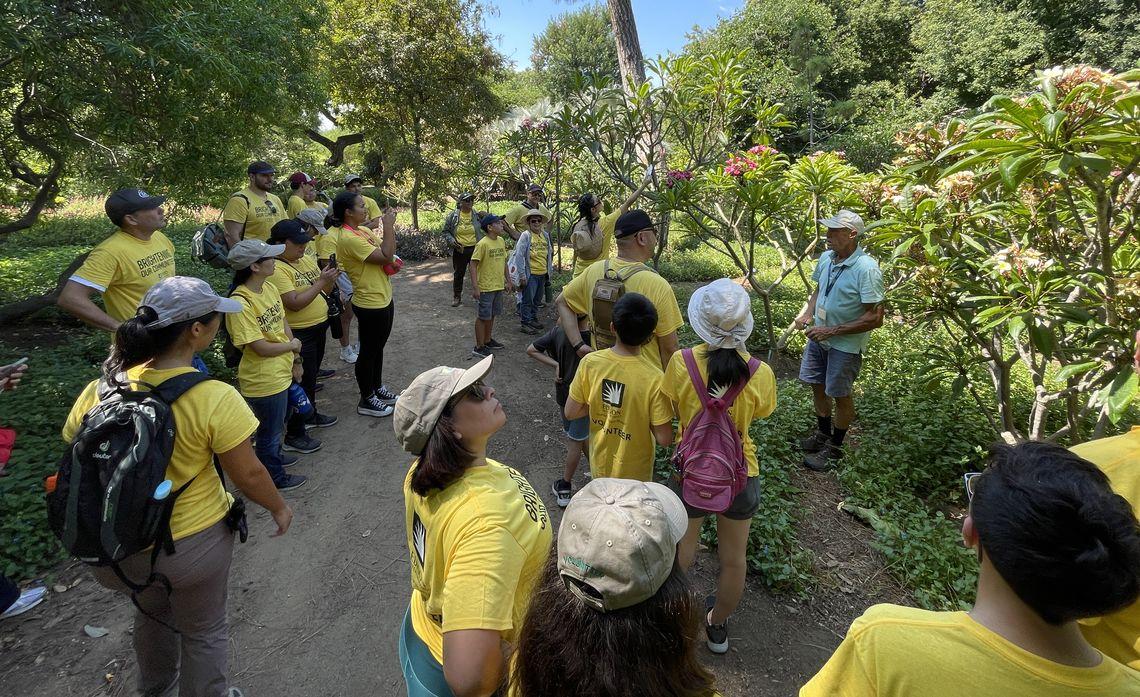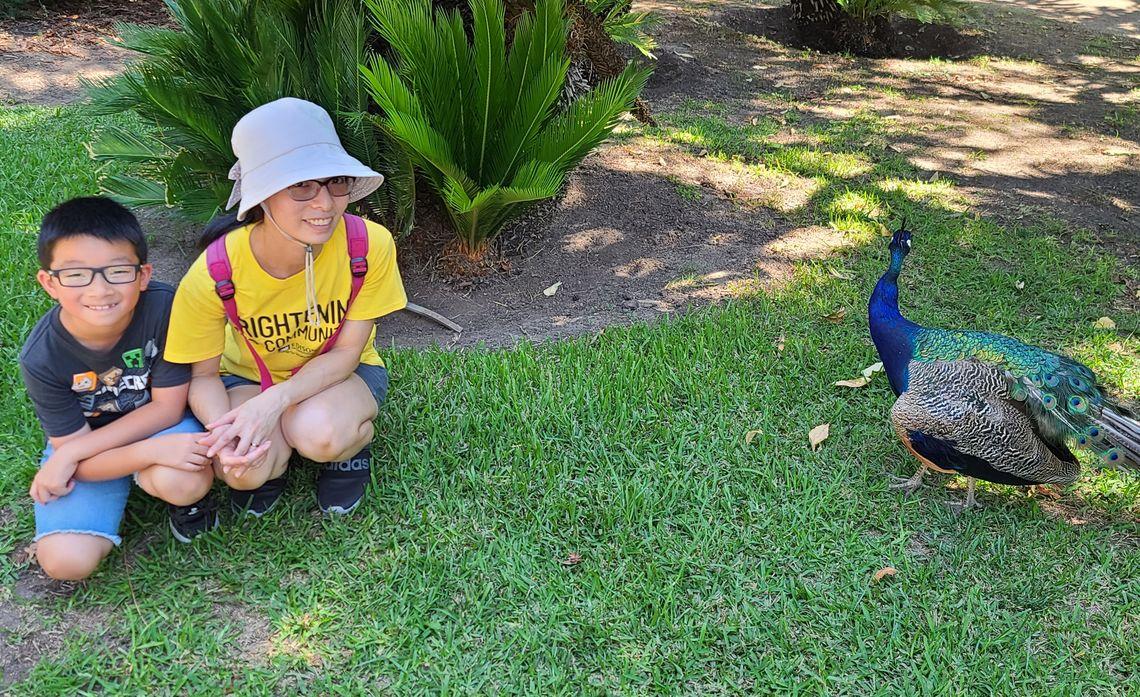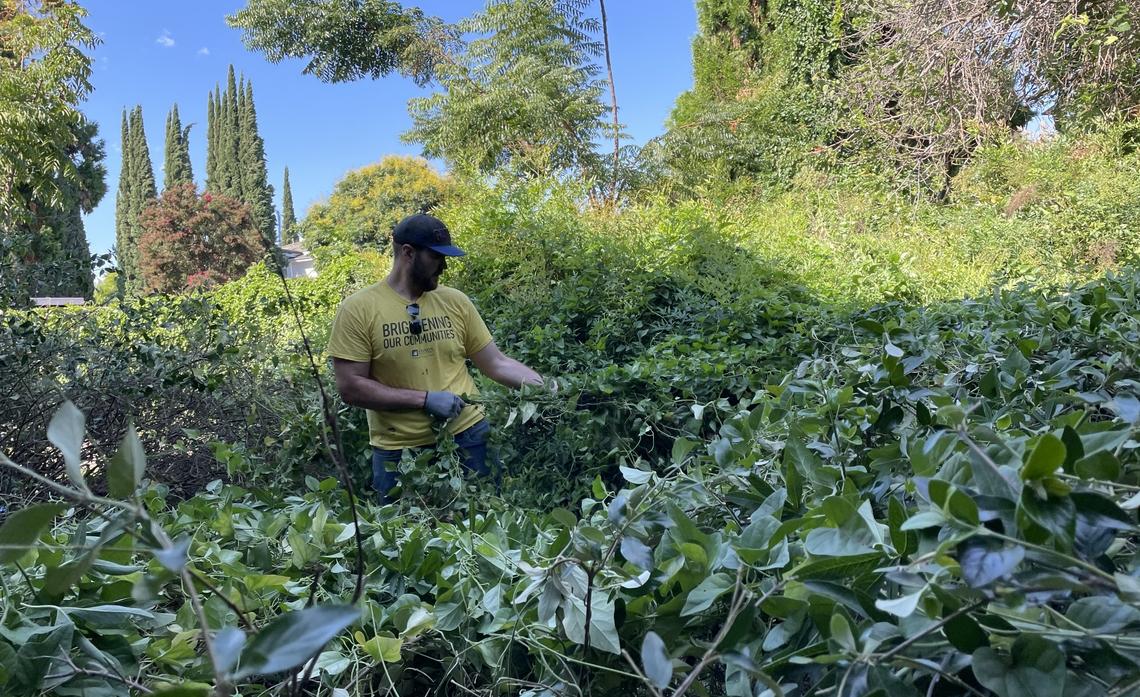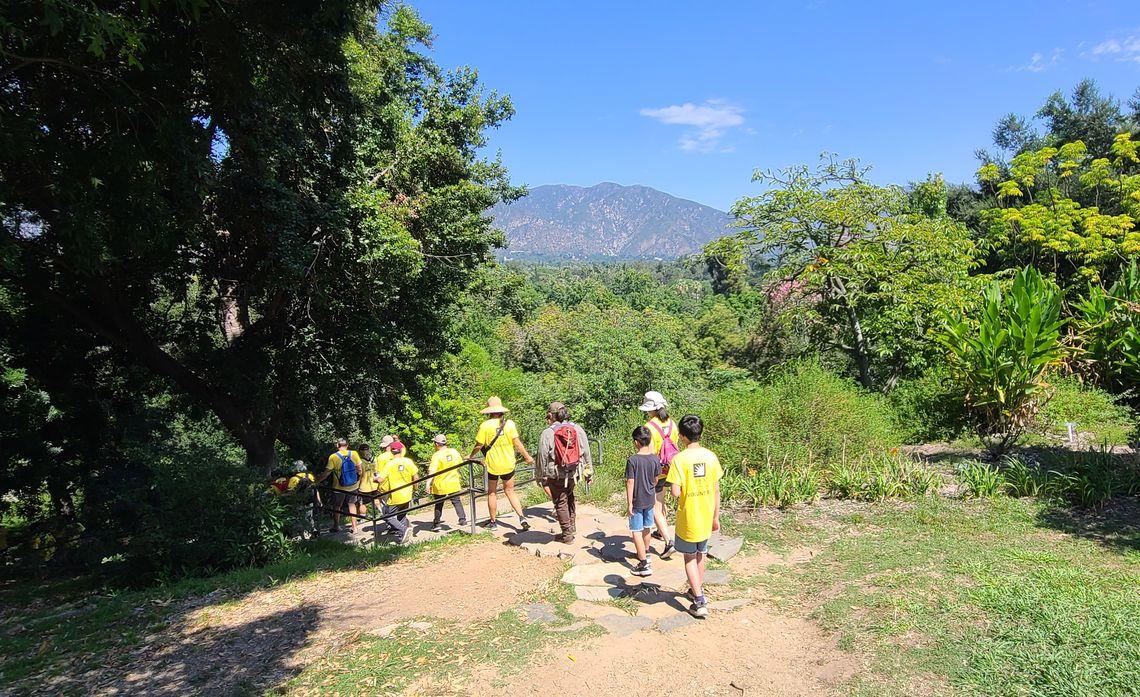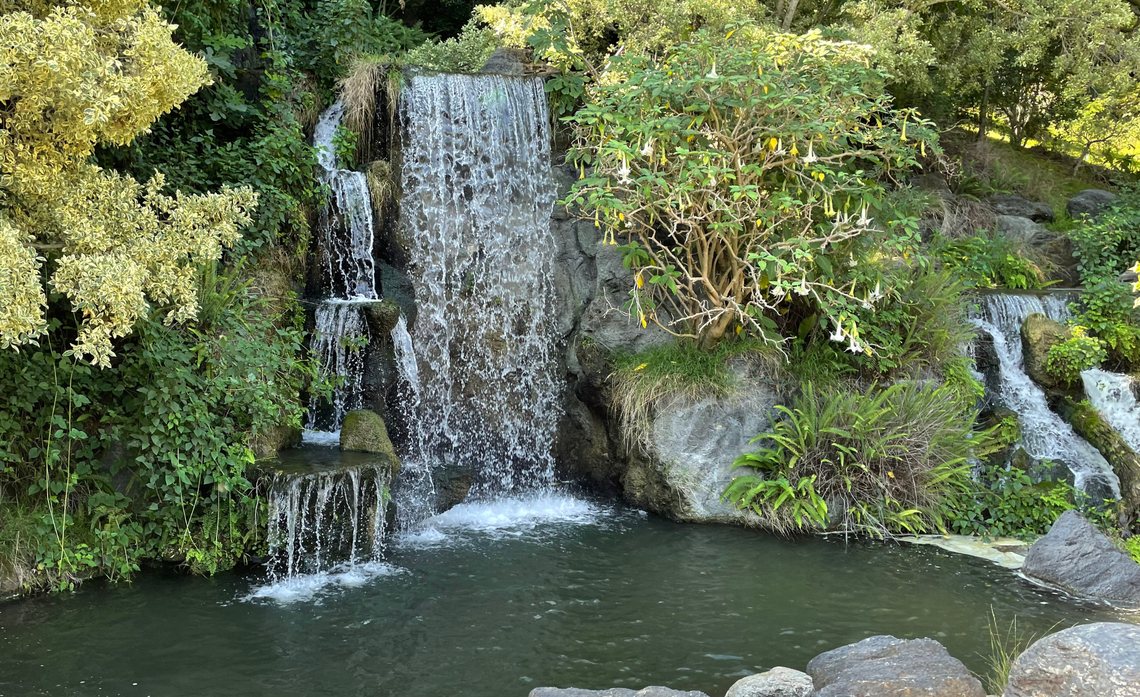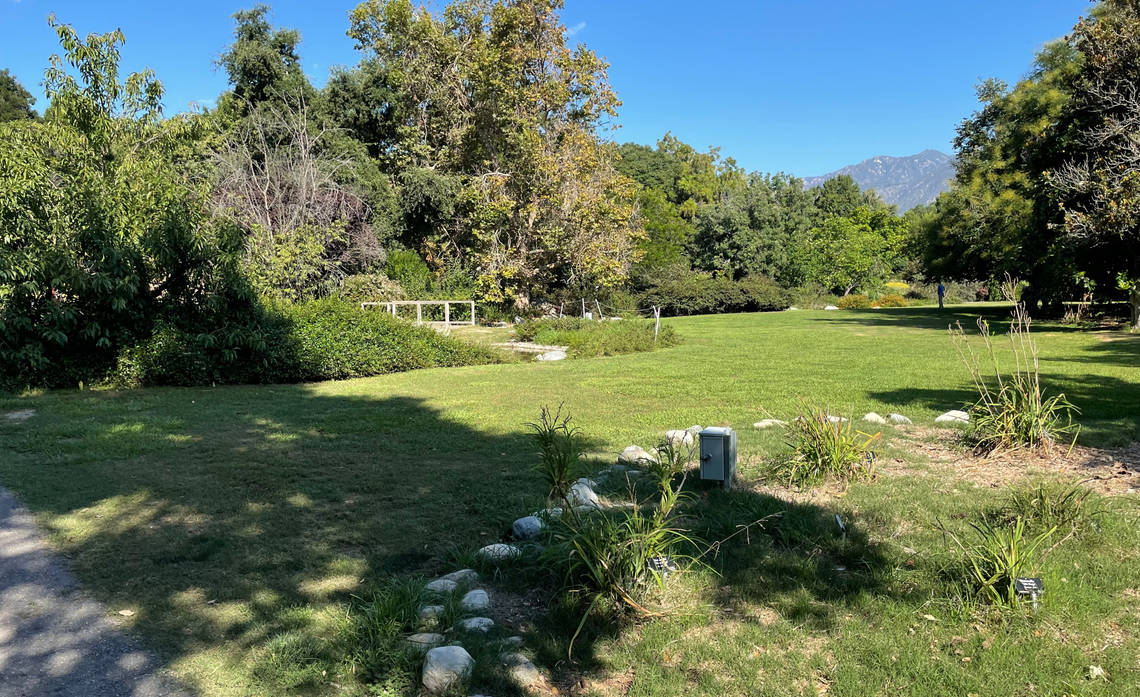Promoting Sustainability, Education at the L.A. Arboretum
Edison volunteers join cleanup efforts to maintain more than 100 acres of public gardens.
By Jaivon Grant ENERGIZED by Edison Writer
The Los Angeles County Arboretum and Botanic Garden has helped more than 14,000 underserved students from schools in lower-income communities with limited resources for environmental education.
In September, Southern California Edison volunteers traversed 127 acres of the Arboretum gardens, where staff provided information on specific sustainable gardening techniques, including lasagna mulching, weeding and planting.
Volunteers helped pull weeds, remove waste that threatened plants and wildlife, and used mulching techniques to discourage the growth of new weeds to improve the Arboretum’s soil.
“We are proud to partner with this organization that shares our commitment to environmental stewardship and community engagement. It’s exciting to learn about the Arboretum’s work and be able to give back,” said Erika Potter, SCE senior specialist, who works on volunteer coordination.
Edison International has partnered with the organization since 2018, contributing more than $90,000 in charitable giving toward shared goals. This year, Edison will give $20 million to local communities within the company’s pillars of education, environment, civic engagement and public safety.
“Edison International and SCE have been great partners,” said Judith Hamilton-Márquez, development manager for the Arboretum. “They’ve really invested in our educational programming, and I can’t say enough about what these contributions mean to us and allow us to do.”
In addition to its contributions to education and the community, the Arboretum promotes the future of environmental sustainability, most recently installing a stormwater capturing system under its parking lot pavement.
Water, collected from surface runoff from parking and plaza areas, will be pumped through an elaborate underground filtration system called a modular wetland. The water captured within the cisterns will enter the Rio Hondo drainage via gravity feed, with more than 90% of the captured water flowing into the aquifers.
For more information about Edison International’s philanthropic efforts, visit edison.com/community.

